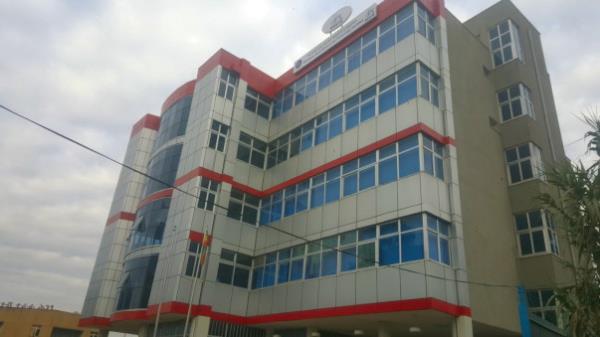16 May 2019

Martin Jarrold, chief of international programme development, GVF
Africa’s mobile communications market has been satellite-dependent for decades, ever since roll-out of early 2G networks was built on a foundation of cellular backhaul over satellite.
Today, as Africa’s wireless operators continue an accelerated roll out of 3G and 4G networks, satellite is being used to deliver backhaul, particularly to serve remote/rural areas, quickly, reliably and cost-effectively.
The total number of satellite-backed cell sites in 3G and 4G networks is expected to grow to well over 10,000 by 2020, just to keep up with customer demand and in order to avoid the prohibitive costs of (non-satellite-based) backhaul in remote locations.
Also well-recognised is the growth in VSAT (very small aperture terminal) networks serving Africa’s expanding enterprise sector, but that growth is particularly evident outside of the already historically strong VSAT country-markets, a phenomenon leveraging-off the same availability of HTS (high throughput satellites) capacity over the continent that is serving increased broadband access for consumers.
In addition, more developments have proven that Africa’s domestic ascendancy in the satellite field comes as the continent reaches an inflexion point in its: (1) information and communications technology (ICT)-related social and economic development generally and (2) in its contributions to, and its future derived benefits from, space-based communications and non-communications-related space activities specifically.
April 2019 also showed that across Africa the leveraging of opportunities surrounding satellites and space-related activity has never been greater. Many nations – Egypt, Algeria, Angola, Morocco, Ghana, Nigeria, South Africa, Kenya, Ethiopia, and Mauritius – are now introducing or have announced satellite programmes to kickstart wider innovation. Tunisia has now joined this list. However, whereas many of these newer space-nations are looking primarily at ‘smallsat’ technologies for the Earth observation applications arena – recognising that remote sensing information has the potential to improve agriculture, guard against deforestation, improve disaster planning, facilitate maritime domain awareness, enhance border security, etc., etc. – Tunisia is aiming towards building a future constellation of 30 communications satellites.
Collaboration between the Telnet Group and Russia’s GK Launch Services – established by Roscosmos, the Russian state space corporation and authorised to conclude commercial contracts for the launch of spacecraft using the Soyuz-2 family launch vehicles from Russian spaceports – will see lofted to orbit during 2020 the Challenge One satellite.
The Challenge One spacecraft will be a development of a scientific research and innovation programme exploring the practical applications of new ICT concepts, ultimately leading to the deployment of a complete communications constellation.
Additionally, in 2020, Angola plans finally to get a 16 C-band plus 6 Ku-band transponder communications payload to geostationary orbit on Angosat-2, the replacement for Angosat-1 which failed shortly after attaining orbit in 2018. Its National Space Programme Management Office (GGPEN) has defined Angosat-2’s footprint coverage as Angola, Africa and parts of Europe.
Africa’s commitment to satellite-related endeavour is not only manifest as a result of a general recognition that designing and building ‘smallsats’ can help promote national capacity-building and development objectives, but more specifically in the identification that the applications to which they are applied can foster the achievement of a range of particular scientific and technological goals.
It is also the result of international geo-politics, the pursuit, by other actors, of economic influence, and associated bi-lateral collaborations between national space agencies – those of the bigger, long-established, space-nations and those of the much smaller and new-entrants to an increasingly commercialised space ecosystem. One example falls within the realms of China’s Belt and Road Initiative and features Ethiopia’s journey to orbit.
One facet of Beijing’s increasing influence over the economies of Africa has taken the form of both state-run and private space companies selling “Made in China” satellites to the continent’s space-ambitious nations. Whilst the China-Ethiopia space connection is not as well-known as the China-Nigeria technology transfer relationship – wherein China gifted USD550 million to Nigeria for the purchase of two Chinese-built spacecraft – with Chinese help Ethiopia too will soon be heading to space.
Ethiopia’s space ambitions have accelerated in recent years, with the creation of a space science council and the 2016 establishment of the Ethiopian Space Science and Technology Institute (ESSTI). Assuming that the national space programme proves resilient enough to survive political and economic uncertainties, Ethiopia wants to reduce reliance on foreign telecoms by launching its own communications satellite and to develop and manufacture its own satellites for national security, disaster management and response, weather monitoring, and crop and land management applications.

Ethiopian Space Science and Technology Institute, Addis Ababa, Ethiopia
However, firstly will come the China-aided satellite-build. The satellite – an Earth observation platform to collect data on climate change – will have its Ethiopian specification-design and manufacturing costs 75 per cent funded by the Chinese. Launch will be from China; but command and control will take place from a centre in Ethiopia.






